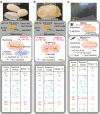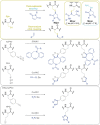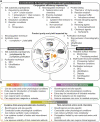Silk Bioconjugates: From Chemistry and Concept to Application
- PMID: 36706352
- PMCID: PMC10777352
- DOI: 10.1021/acsbiomaterials.2c01116
Silk Bioconjugates: From Chemistry and Concept to Application
Abstract
Medical silks have captured global interest. While silk sutures have a long track record in humans, silk bioconjugates are still in preclinical development. This perspective examines key advances in silk bioconjugation, including the fabrication of silk-protein conjugates, bioconjugated silk particles, and bioconjugated substrates to enhance cell-material interactions in two and three dimensions. Many of these systems rely on chemical modification of the silk biopolymer, often using carbodiimide and reactive ester chemistries. However, recent progress in enzyme-mediated and click chemistries has expanded the molecular toolbox to enable biorthogonal, site-specific conjugation in a single step when combined with recombinant silk fibroin tagged with noncanonical amino acids. This perspective outlines key strategies available for chemical modification, compares the resulting silk conjugates to clinical benchmarks, and outlines open questions and areas that require more work. Overall, this assessment highlights a domain of new sunrise capabilities and development opportunities for silk bioconjugates that may ultimately offer new ways of delivering improved healthcare.
Keywords: bioconjugation; chemistry; polymer therapeutics; silk fibroin; spidroin.
Conflict of interest statement
The authors declare no competing financial interest.
Figures






